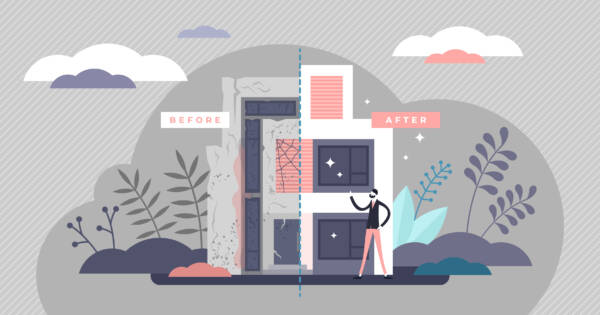As we step into 2025, refinancing your mortgage may present a valuable opportunity to optimize your financial situation. Whether you’re aiming to lower monthly payments, tap into home equity, or secure a better interest rate, understanding the intricacies of refinancing is essential. Navigating this complex process requires knowledge and strategic planning. Learn about the benefits, considerations, and steps involved in refinancing your mortgage, empowering you to make informed decisions tailored to your financial goals.
Understanding Mortgage Refinancing
Refinancing a mortgage involves replacing your current home loan with a new one, ideally under better terms. Homeowners might pursue refinancing to reduce their interest rate, switch from an adjustable-rate to a fixed-rate mortgage, or shorten the loan term. By refinancing, you could potentially lower monthly payments, saving money over time, or reduce the total interest paid on the loan.
Additionally, refinancing can allow access to your home’s equity, which might be used for home improvements, debt consolidation, or other financial needs. It’s crucial to evaluate how refinancing aligns with your financial objectives and current market conditions to determine its appropriateness for you.
Factors Influencing Your Decision
Before deciding to refinance, consider several key factors that could impact the outcome. Interest rates play a significant role, as even a slight decrease might result in substantial savings. Monitoring market trends and expert predictions for 2025 may help anticipate rate changes that could benefit refinancing efforts.
Equally important is the break-even point, which represents how long it will take for the savings from refinancing to cover the associated costs. Assess your long-term living plans; if you’re not staying in your current home long enough to reach this point, refinancing might not be advantageous. Finally, take into account your credit score, as it significantly influences the interest rates and terms offered by lenders.
Types of Refinancing
Homeowners typically choose between two main types of refinancing: rate-and-term refinancing and cash-out refinancing. Rate-and-term refinancing is often pursued to secure a lower interest rate or modify the loan term. This option might lead to reduced monthly payments or paying off the mortgage more quickly.
Cash-out refinancing allows you to convert part of your home equity into cash, often used for significant expenses like home renovations or medical bills. While this option can provide liquidity, it may also increase the loan balance and interest payments, so weigh these factors carefully. Understanding these options can help align refinancing choices with your financial situation.
Calculating Costs and Savings
Careful cost analysis is essential when considering refinancing, as fees and expenses can influence the overall benefit. Common costs attached to refinancing include origination fees, appraisal fees, and closing costs. Additionally, some lenders might impose prepayment penalties on the original mortgage.
It’s advisable to calculate potential savings, factoring in the new interest rate, adjusted loan term, and any upfront costs. Online mortgage calculators might be useful for estimating scenarios, helping to identify the most beneficial refinancing options. By thoroughly assessing costs versus savings, homeowners can decide whether refinancing contributes positively to their financial goals.
Choosing the Right Lender
Selecting the right lender is a critical step in refinancing, as it can affect the rates, terms, and overall experience. Start by researching multiple lenders, comparing their offers, and evaluating their reputations. Consider established banks, credit unions, and online mortgage companies to find competitive choices.
Engage with potential lenders by requesting detailed quotes and asking questions about fees, process timelines, and customer service. It’s recommended to read customer reviews to gain insights into other borrowers’ experiences. Building a list of preferred lenders can streamline the decision-making process, leading to a refinancing option that suits your requirements.
Preparing for the Application Process
Preparation is key to a successful refinancing application. Begin by gathering necessary documents, such as proof of income, tax returns, and a current mortgage statement. Ensuring this paperwork is up-to-date allows for faster processing and minimizes the chance of delays.
Furthermore, it’s beneficial to check your credit report and address any inaccuracies before applying. Enhancing your credit score, if possible, might lead to more favorable refinancing terms. Understanding the application requirements allows you to present a strong financial profile, boosting your chances of approval with desirable loan conditions.
Learn More Today!
Refinancing your mortgage in 2025 might open doors to significant financial advantages, but it demands a strategic approach. From grasping the nuances of refinancing types to selecting the ideal lender, informed decisions can lead to beneficial outcomes.
By evaluating costs, savings, and personal objectives, homeowners can determine whether refinancing aligns with their financial plans. As you navigate this process, thorough research and preparation could position you to make prudent choices, potentially leading to a more secure financial future.








